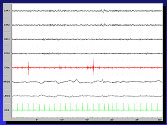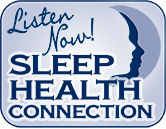Diagnosis of Obstructive Sleep Apnea (OSA)
A consultation, including a thorough sleep history and physical exam, is often the first step to diagnosing any sleep disorder including Obstructive Sleep Apnea. If it is determined you need a more detailed assessment, your primary care physician may refer you for an overnight sleep study (polysomnogram). This test records the patient’s brainwaves, heartbeat, respiratory effort, airflow, eye movement, blood oxygen levels and breathing during an entire night. Other sleep tests , such as a Multiple Sleep Latency Test (MSLT), may be performed to measure and assess the severity of daytime sleepiness, and to exclude other sleep disorders. In addition to your PCP, pulmonologists, neurologists, or other physicians with specialty training in sleep disorders may be involved in making a definitive diagnosis. Sleep apnea is easily diagnosed and must not be ignored.
Terminology upon Testing:
- An apnea event
Defined as a cessation of ventilation(breathing) for 10 seconds or longer. - Apnea Diagnosis
Occurs when a person experiences 30 or more apnea episodes during a seven hour sleep period. - Hypopnea
Occurs when there is a partial obstruction somewhere in the airflow. It involves a decrease in oxygen levels in the blood (oxygen desaturation-uptake of greater than 4%). - RDI (Respiratory Disturbance Index ) / AHI (Apnea-Hypopnea Index)
Average number of apneas plus hypopneas combined per hour of sleep. - UARS- Upper Airway Resistance Syndrome
This condition lies midway between benign snoring and true Obstructive Sleep Apnea. People with UARS suffer many of the symptoms of Obstructive Sleep Apnea but sleep testing results lack evidence demonstrating true apneas or oxygen desaturation.
Severity of Apnea Defined By:
 Length of time of apnea event.
Length of time of apnea event.- Percentage of oxygen desaturation.
- Complete or partial stoppage of breathing.
- 5-20 events per hour = Mild OSA.
- 20-40 events per hour=Moderate OSA.
- 40 events per hour=Severe OSA.
NOTE: Many different factors contribute to the diagnosis of Obstructive Sleep Apnea . The above range is only a general breakdown. Other parameters such as lowest oxygen level obtained and length of apnea episodes during the sleep testing procedure effect the final diagnosis of this disorder.






(630) 369-5508